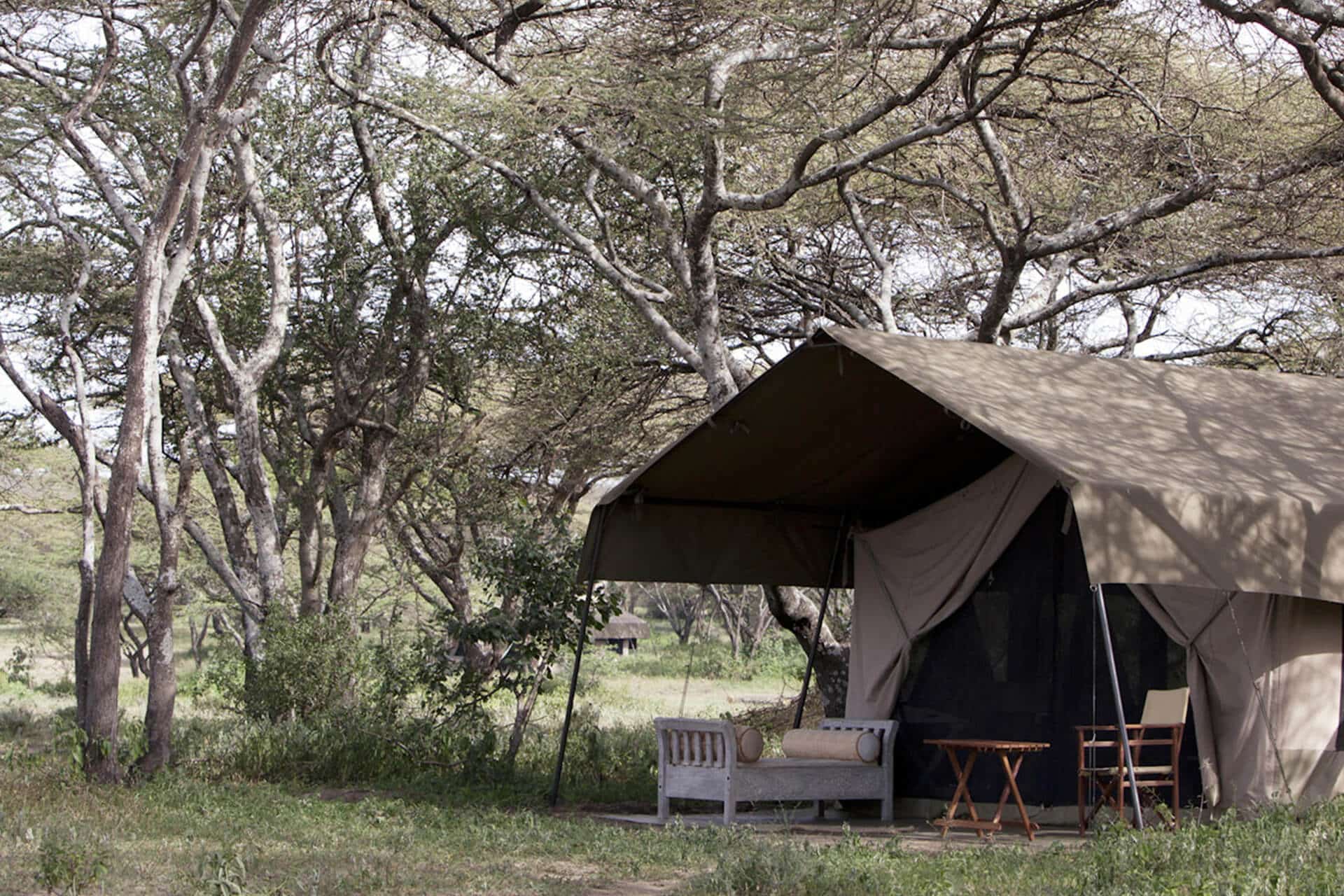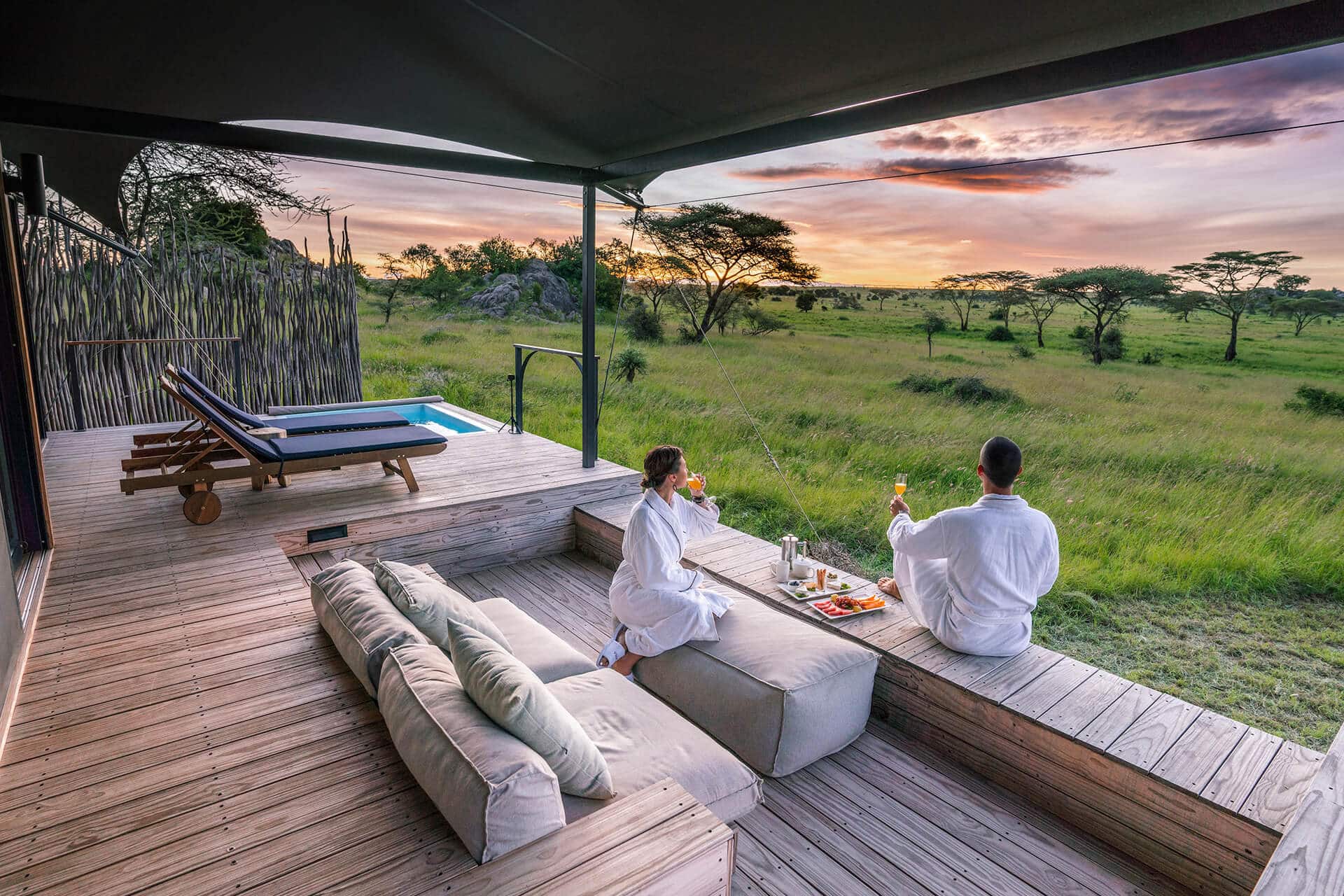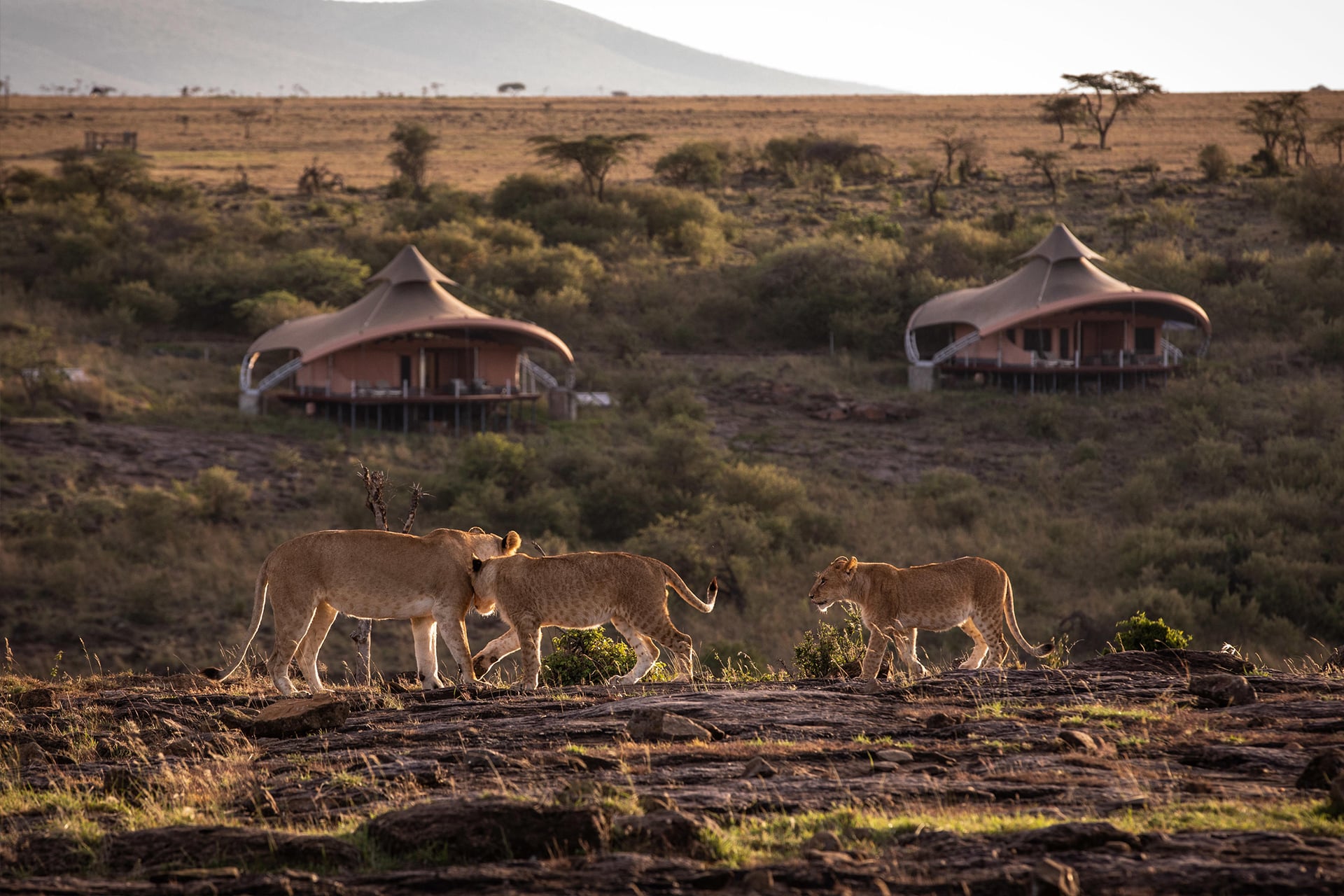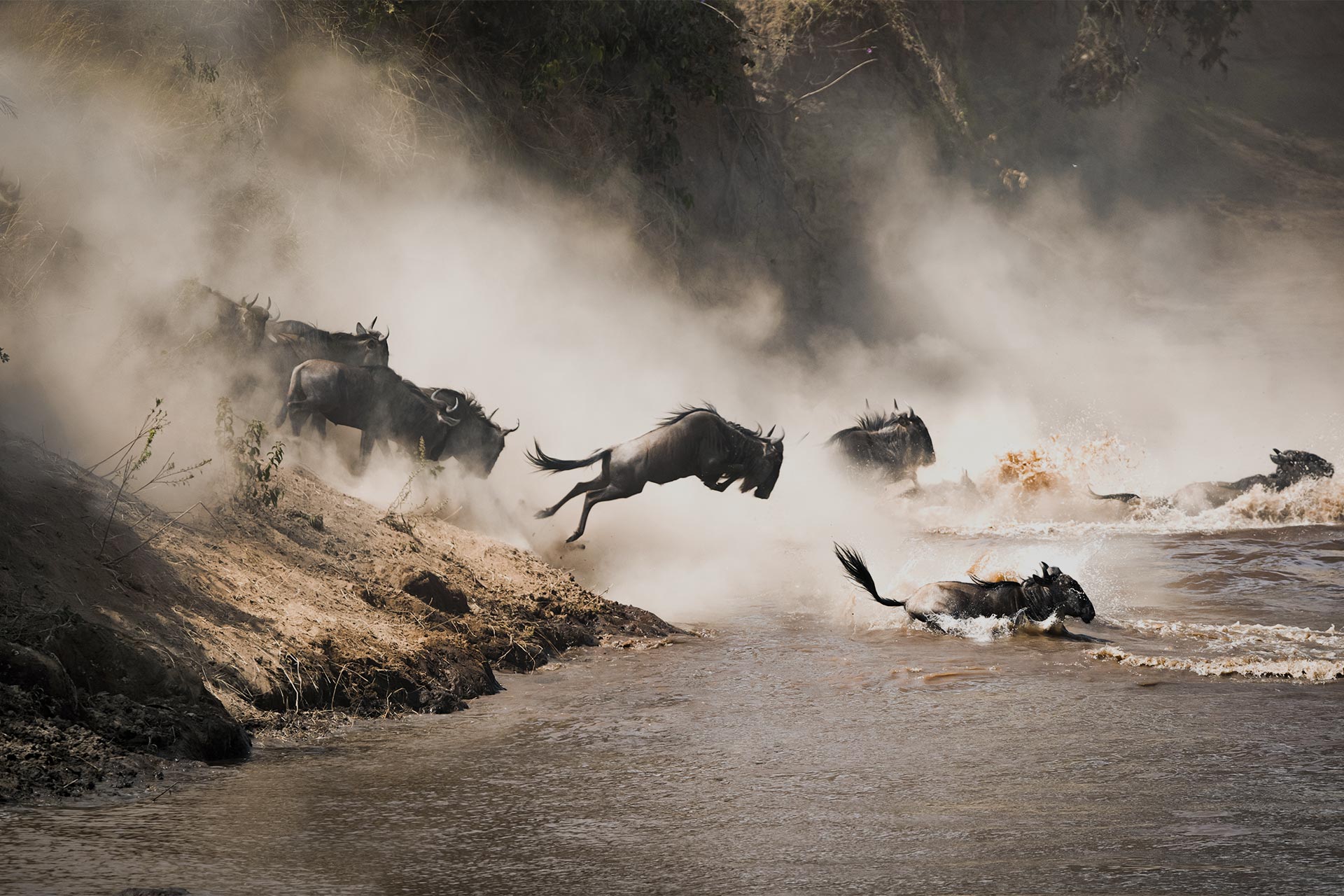Great Wildebeest Migration
Guide to the Great Wildebeest Migration in March
Ker & Downey® Africa > Luxury Travel Experiences > Great Wildebeest Migration Safaris > Great Wildebeest Migration in March
Long rains and movement begins
March marks the commencement of the long rains in the Serengeti and sees the migration move away from the strained southern plains that have been depleted from the high intensity of grazing. Following the rain and fresh grass, the herds move westward towards the Maswa Game Reserve together with their young, who are now strong enough to follow.
Because the one-month-old calves need to be fed regularly, and with some of the herd still giving birth to the last of their young, the animals tend to move at a slower pace, making them easy prey for predators. This means encounters with lion, cheetah and leopard are still a regular occurrence during March, which makes for some hair-raising wildlife viewing.
Experiences
Night Game Drives
A night drive is a thrilling adventure and a whole different way of experiencing the bush when compared to a day safari. Generally leaving at around twilight – a great time to track and observe nocturnal animals – these drives can often last long into the night. Highly-skilled professional guides use infrared animal-friendly spotlights to spot the eyes of anything from the smaller creatures, to big cats and predators, stealthily hunting their prey in the cool of the evening.
Where to stay

Olakira Migration Camp
The luxurious, mobile Olakira Migration Camp is a great option for those wanting to follow the migration around the Serengeti, moving from the southern plains (from December to March) to witness the calving season, to the north (between June and November) to witness the treacherous Mara crossing. There are nine beautifully appointed en-suite tents, as well as mesh-covered stargazing tents which allow guests to sleep under a sky of glittering stars at night.

Serian’s Serengeti South
Operating from around mid-December to May, Serian’s Serengeti is a mobile camp set up in a prime position to witness the birthing season of the great wildebeest migration in March. Located on the southernmost extreme region of the grassy plains of the Serengeti, in the Ngorongoro Conservation Area, the six intimate tents offer a view over the wildebeest calving grounds. Serian’s is also very close to the Seketeti Escarpment – a 3,000 foot drop to Lake Eyasi – which is used as a fly camping spot for the more adventurous!

Lemala Nanyukie
Located in the renowned Seronera area, which lies in the path of the great wildebeest migration between April and June, and then again from November to January, Lemala Nanyukie is in a region well known for its big concentrations of predators. Shaded by ancient acacia trees, on a rocky outcrop overlooking the Serengeti’s grassy savannah plains, the camp blends seamlessly with the environment, elegantly blending contemporary and traditional aesthetics.
Great Wildebeest Migration Trips
Great Wildebeest Migration Safari Inspiration
Contact us, we are here every step of the way
See something you like? The luxury safaris showcased on our website are just a taste of what your unique African experience could look like. Tell us what you liked and we will craft a one-of-a-kind luxury safari, just for you!






